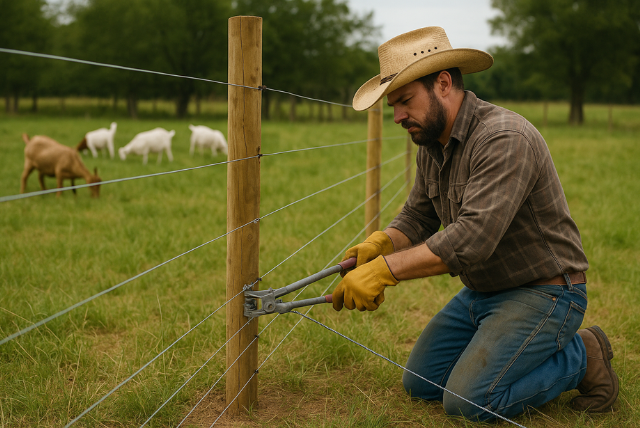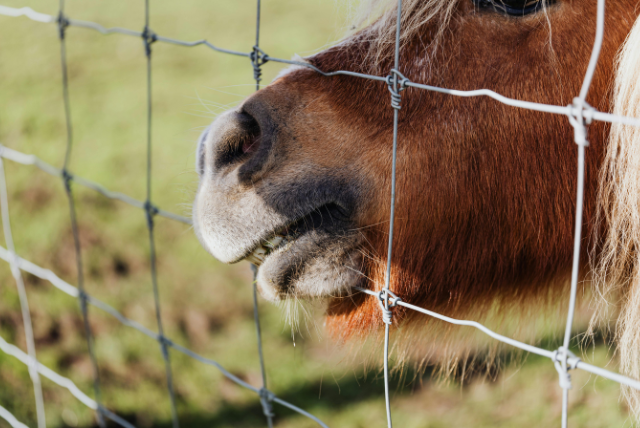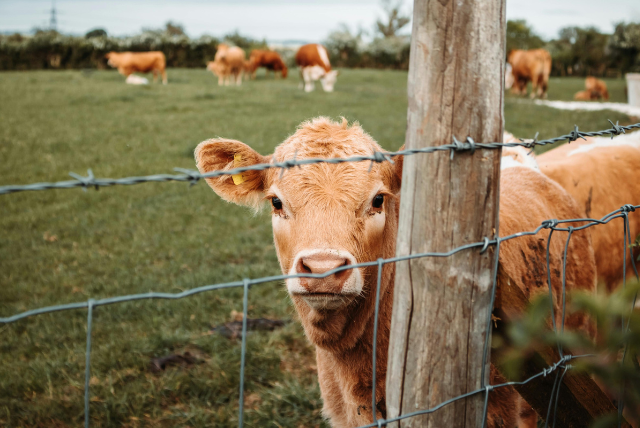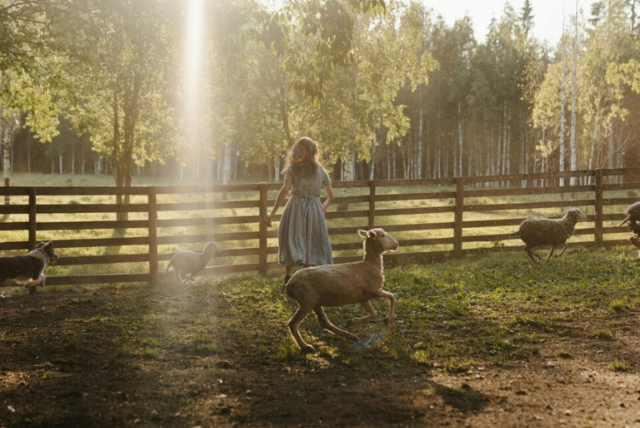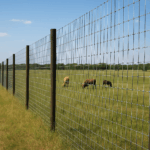
Ranch and High Game Fencing: Safe, Durable Solutions for Farms and Wildlife
June 26, 2025
Everything You Need to Know About Horse Mesh Fencing
July 16, 2025Build Reliable DIY Livestock Fencing for Your Ranch – A 421 Fencing Guide. When you run a small ranch, livestock safety and cost efficiency are top priorities. Whether you’re raising goats, cattle, or both, the right fencing can protect your animals, land, and peace of mind. And the best part? You don’t always need a contractor. At 421 Fencing, we’ve helped hundreds of Texas ranchers secure their land. Now we’re sharing our professional fencing know-how so you can confidently build your DIY livestock fence—strong, durable, and budget-friendly.
Why DIY Livestock Fencing Makes Sense for Small Ranches
- Doing it yourself isn’t just about saving money. With DIY fencing, you get:
- Flexibility to expand or modify as your ranch grows
- Control over materials and layout
- A sense of accomplishment from building something that lasts
- Whether you’re tackling a DIY cattle fence, goat fencing, or a DIY electric fence, this guide walks you through every step.
Tools and Materials You’ll Need
Make sure you have these essentials before you begin:
- Fence posts (wood or metal)
- Post driver or auger
- Woven wire, barbed wire, high tensile or electric wire
- Staples, clips, or insulators
- Wire stretcher and fencing pliers
- Gates and secure latches
- Voltmeter (for electric fencing)
Tip: Goats love to test fences! Use 4″x4″ mesh and consider electric lines to prevent climbing or burrowing.
Step-by-Step Guide to Building DIY Livestock Fencing
Step 1: Plan Your Fence Layout
Start by mapping your pasture:
- Mark corners, gates, and turns.
- Keep lines straight where possible to reduce tension points.
- Identify predator entry zones and include extra reinforcement.
📝 Pro Tip from 421 Fencing: Always check local zoning or livestock regulations—your fence may need to meet minimum height or material requirements. Refer to fencing guidelines for standards.
Step 2: Choose Your Fence Type
Here’s how to choose the best type based on your livestock:
🐄 DIY Cattle Fence
- Barbed wire or high-tensile fencing
- 4–5 feet high
- Add an electric line to prevent leaning
🐐 DIY Goat Fencing
- Woven wire with small openings (4″x4″)
- Height: at least 4 feet (5+ if dealing with jumpers)
- Add a bottom electric line to prevent burrowing
⚡ DIY Electric Livestock Fence
- Use for cattle, goats, and horses
- Combine with high tensile or poly wire
- Add visible tape if animals are new to electric fencing
Step 3: Install Corner and Line Posts
- Corner posts should be 8’ long, buried 3’ deep, and braced.
- Space line posts 8–12 feet apart (depends on wire type).
- Use a level and post driver for accuracy.
Step 4: Attach and Tension the Wire
- Use a wire stretcher to get the proper tension.
- For high tensile wire, tension each line before moving to the next.
- Secure wires with fence staples or clips—don’t overdrive, which could damage the post or wire.
For electric fencing:
- Add insulators to posts before attaching the wire.
- Connect to a solar or AC-powered energizer.
Step 5: Install Gates and Finish Up
- Attach gates securely using strong hinges.
- Ensure there’s enough clearance to accommodate livestock or equipment.
- Walk your fence line and test for weak points, tension issues, or electrical flow.
Real Rancher Success: “We Did It Ourselves—Thanks to 421 Fencing!”
A ranch owner recently shared:
“We could not be happier – we have been repeat customers! Dustin is dependable, does quality work, and makes sure his team leaves the customer happy when the project is finished. He knows his stuff and will make sure the work is done right the first time.”
— Greg D., Texas Rancher
Internal Maintenance Tips
- Walk your fence line monthly to check for sagging or damage.
- Use a voltmeter weekly for electric fencing to ensure proper current.
- Clear vegetation that could short out electric wires.
Ready to Upgrade or Expand Your Ranch Fencing?
Whether you’re building a DIY cattle fence or planning an upgrade with DIY electric livestock fencing, 421 Fencing is here to help. Our experts can provide materials, tips, or full-service installation when you’re ready to scale.
👉 Contact Us for Expert Advice or a Free Quote!
Or explore our Ranch Fencing Services to learn how we’ve helped hundreds of ranchers secure their land with reliable, long-lasting fencing.
FAQs: DIY Livestock Fencing
What’s the best fencing for goats?
Woven wire (4×4 mesh) combined with electric wire at the base is best for keeping goats in and predators out.
How much does DIY livestock fencing cost?
Costs range from $0.75 to $3 per linear foot, depending on materials and fence type.
Can I electrify an existing fence?
Yes! You can retrofit existing fences with electric lines using insulators and a fence charger.
Is high tensile fencing worth it?
Absolutely. DIY high tensile fencing is cost-effective, low maintenance, and extremely durable.

